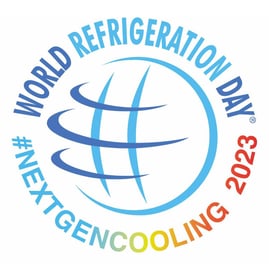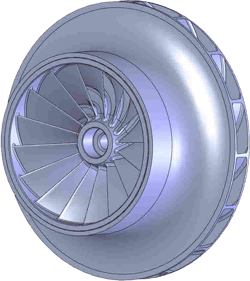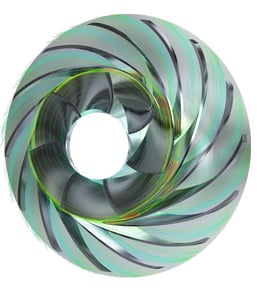ADT is proud to support World Refrigeration Day. We've been involved in turbomachinery design for many years for cooling, and it's great to see the industry get even more recognition.

In this post we're going to look at some of the refrigeration projects we've been involved in. We'll see the sorts of challenges faced by companies in the design of cooling components and how they were able to address them.
Creating designs with tight constraints on performance and size, with particular focus on meeting efficiency targets which are only becoming more and more demanding, were just a few of the considerations in the design phase of these projects.
Daikin Applied needed to redesign its HVAC compressor to achieve a two-point efficiency gain. This drive for efficiency came from a combination of customer demand and governmental standards like those set by the U.S. Environmental Protection Agency and the EU's Ecodesign Directive.
They decided to try a new approach using 3D Inverse Design to meet these goals. A conventional approach tends to limit the design space and make the process time-consuming as it relies so much on trial and error. 3D Inverse Design, on the other hand, allows for control of the blade loading to create breakthrough designs and make big jumps in performance.
Inside the case study, you can find out what drove Daikin to choose TURBOdesign Suite in the first place, and how they were able to implement it so quickly and achieve significant improvements in efficiency.
Daikin Industries, the parent company of Daikin Applied, were also concerned with efficiency and confronting global environmental problems. Having achieved efficiency gains in the design of their compressors they decided to apply the same principles to their air conditioning fans, using the same 3D Inverse Design technology.
With a focus on taking their fan designs to a much higher level of efficiency and shortening the design time, Daikin was able to achieve their aims with TURBOdesign Suite. Inside the case study, you can find out how they improved the designs and saw much greater planning accuracy and other savings, thanks to the speed and ease of developing new prototypes once optimum specifications were found.
Johnson Controls is a global manufacturer of air-conditioning and refrigeration products. They wanted to redesign and optimize the volute inside some of their centrifugal compressors, used for industrial cooling in many large buildings across the world.
Alongside high aerodynamic efficiency, it was important to maintain compact packaging in the redesign. This led to some departures from the most optimum design to meet manufacturing restraints, which were achieved by simply restricting the minimum cross-sectional area within the software.
The software used in this case was TURBOdesign Volute, which has significantly changed not only the design methodology but also the whole approach to volute design. It has allowed the volute to be optimized during the design cycle, creating a much more detailed design and better matching with the rest of the compressor components. Find out more about how the design of the volute was crucial to this project by reading the consultancy summary.
A leading manufacturer of high-speed rotating machines needed to redesign a centrifugal chiller compressor. This particular compressor used the new refrigerant R1233zd(E). The key challenge was the fact the chiller had to operate over a wide range of conditions, creating a very wide operating map. This was alongside the need for high-pressure ratios, efficiency performance, and limits on the size of the stage.
The diffuser was one of the most interesting and challenging aspects of the redesign. Engineers had to try out both vaned and vaneless diffusers before settling on the optimum configuration. What they were able to create and the final efficiency gains achieved can be found in the consultancy summary.






Share This Post